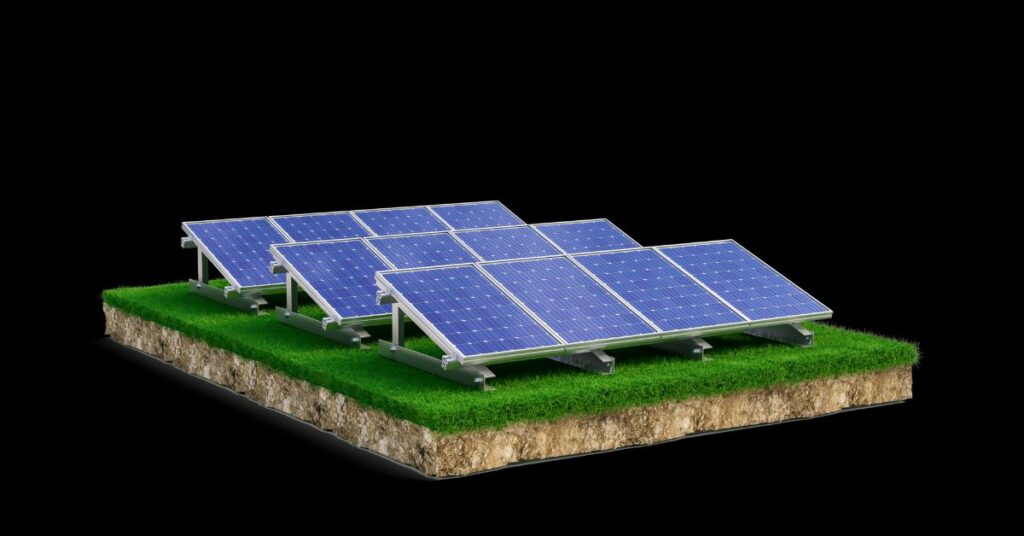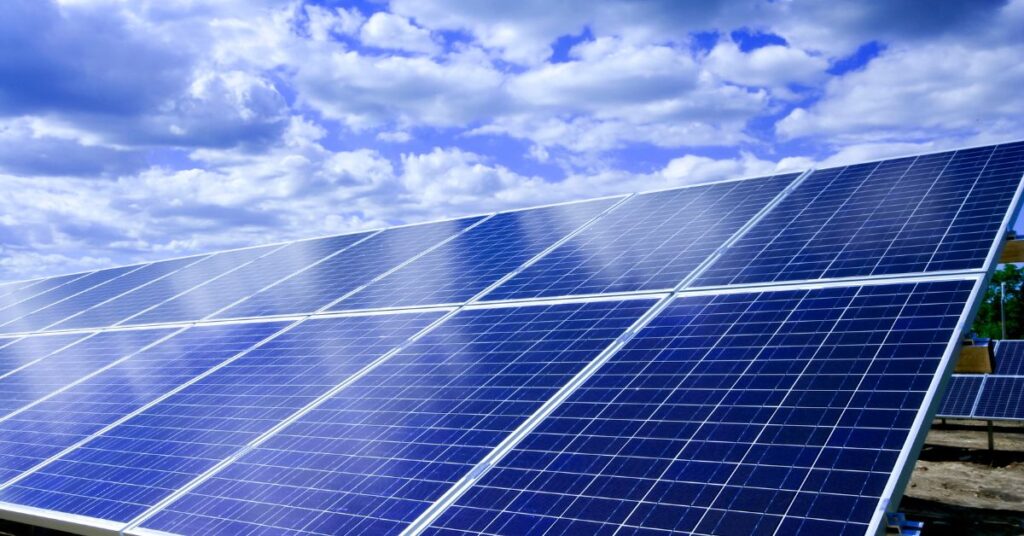A Guide on Solar Panel Roads in India
Know the details about A Guide on Solar Panel Roads in India, Explore the future of sustainable infrastructure with our comprehensive guide on solar panel roads in India. Discover how this innovative technology integrates solar energy into road surfaces, generating clean power while supporting transportation needs.
Learn about India’s ambitious projects, key benefits of solar roads, challenges, and the potential for transforming energy efficiency in urban and rural areas. Whether you’re interested in renewable energy, smart cities, or eco-friendly solutions, our guide covers all you need to know about the environmental and economic impact of solar panel roads. Dive into India’s journey toward a greener tomorrow!
Table of Contents
A Guide on Solar Panel Roads in India
India, with its ambitious renewable energy goals, is actively exploring various methods to increase its green energy output. Among the many innovative initiatives is the concept of solar panel roads, which aims to transform road surfaces into energy-generating assets. This article will explore what solar panel roads are, how they work, the advantages and challenges they present, India’s progress in this domain, and what the future holds.
What are Solar Panel Roads?
Solar panel roads are a groundbreaking approach to integrating renewable energy into urban infrastructure. By embedding photovoltaic (PV) cells directly into road surfaces, solar roads generate electricity from sunlight. The idea, though in its nascent stages, has gained traction globally as a dual-purpose solution that combines infrastructure with sustainable energy generation.

Solar roads work by embedding specialized solar panels beneath durable, skid-resistant glass or other transparent materials designed to withstand traffic loads. These PV cells absorb sunlight and convert it into electricity, which can be used for various applications, such as powering street lights, electric vehicle (EV) charging stations, or even feeding back into the national grid.
How Do Solar Panel Roads Work?
The working of solar panel roads primarily relies on photovoltaic cells that convert sunlight into electricity. Below are the key components and working principles:
- Photovoltaic Cells: Solar panel roads use specially designed PV cells, often encapsulated within layers of tempered glass or polymer, that convert sunlight into DC electricity.
- Layering Technology: Multiple layers are used in constructing solar roads. Typically, the top layer is transparent and slip-resistant to provide traction for vehicles. The middle layer houses the PV cells, and the bottom layer functions as the foundation and sometimes includes wiring to transport electricity to storage or consumption points.
- Energy Storage and Distribution: Energy generated can be used in real-time or stored in batteries for later use. In rural or isolated areas, solar roads could offer an efficient way to power nearby towns or farms.
- Smart Grid Integration: Some advanced solar panel road systems connect to a smart grid, which efficiently manages electricity flow, distributes surplus energy to the grid, and manages demand during peak hours.
- Real-time Monitoring and Maintenance: Some systems include sensors that detect damage or decrease in efficiency, ensuring timely maintenance.
Benefits of Solar Panel Roads
- Sustainable Energy Production: India has ample sunlight throughout the year, making solar energy a viable option. Solar roads could significantly contribute to India’s renewable energy capacity.
- Dual-purpose Infrastructure: By using roads for energy production, solar panel roads optimize land usage, which is especially beneficial in urban areas with limited space.
- Reduced Carbon Footprint: Solar energy reduces dependency on fossil fuels, cutting down greenhouse gas emissions. Implementing solar roads aligns with India’s climate goals.
- Cost-saving Potential in the Long Term: While the initial cost of solar panel roads is high, they could eventually reduce energy costs, especially if maintenance is minimal.
- Job Creation: Introducing solar panel roads on a large scale would require skilled labor for installation, maintenance, and technical monitoring, thereby creating new employment opportunities.
- Improved Road Safety: Solar panel roads could incorporate LED lighting powered by their own energy, illuminating road surfaces better and increasing visibility, especially on highways and rural roads.
Challenges in Implementing Solar Panel Roads in India

- High Initial Investment: Solar panel roads are expensive to install due to the high costs of materials like tempered glass and photovoltaic cells. This initial financial barrier poses a challenge, especially for developing countries like India.
- Durability and Maintenance: Roads experience wear and tear from heavy traffic, making it necessary to ensure the solar panels can withstand high-impact loads and weather conditions. Frequent maintenance could offset the potential cost savings.
- Efficiency Losses: Roads are often shaded by buildings, trees, or other vehicles, reducing the efficiency of the solar panels. Unlike rooftop panels, solar panel roads do not always get unobstructed sunlight, which impacts their energy output.
- Temperature Constraints: In India, road surfaces can reach very high temperatures, especially in summer. Photovoltaic efficiency typically declines at high temperatures, affecting the energy output.
- Technological Readiness: Developing solar panel roads that are cost-effective and resilient is still in the experimental stage globally. This lack of maturity poses a risk, as initial projects may require higher costs and R&D.
- Public Safety Concerns: Slipperiness, visibility, and potential structural failures are concerns. While companies are working on ensuring durability, creating a universally safe design remains challenging.
Global Examples of Solar Panel Roads
Countries like France, the Netherlands, and the USA have ventured into solar panel road projects. Here are a few examples:
- France’s Wattway: One of the world’s first solar panel roads, Wattway, was a project designed to test the feasibility of solar roads. Launched in 2016, it covers over 1 kilometer but has faced challenges such as high maintenance costs and limited energy production.
- SolaRoad in the Netherlands: The Netherlands’ SolaRoad project started in 2014 and focused on bike paths rather than vehicle roads. The project, though limited in scope, has been successful, demonstrating that solar roads can be applied in low-traffic areas.
- Solar Highways in China: China has initiated projects to create solar expressways, integrating wireless charging stations for EVs. This approach is particularly relevant for India as EV adoption increases.
- The U.S. Solar Roadways Project: The U.S. tested solar roads in smaller scales, emphasizing the potential of dual-purpose infrastructure, particularly in parking lots and walkways.
Solar Panel Roads in India: Current Initiatives and Future Prospects
India has made substantial progress in renewable energy but is still in the early stages regarding solar panel roads. Pilot projects could be crucial for assessing feasibility, especially in high-sunlight states like Rajasthan, Gujarat, and Maharashtra.
- Pilot Projects and Testing: India is likely to adopt a phased approach, beginning with pilot projects in less congested areas. The Ministry of New and Renewable Energy (MNRE) has shown interest, though official projects have yet to be launched.
- Involvement of Private Sector: Companies involved in infrastructure development and renewable energy are well-positioned to invest in solar road technology. Private-public partnerships (PPP) could expedite the implementation process.
- Integration with Smart Cities Mission: India’s Smart Cities Mission, focusing on urban sustainability, provides an ideal platform for testing solar roads in select urban areas, potentially within EV charging zones.
- Potential for Highways: Given India’s extensive network of highways, solar roads could be a good fit for toll roads, where consistent maintenance is already a priority. Highway solar panels could power lighting and traffic signals.
The Future of Solar Panel Roads in India
For India, solar panel roads offer a unique opportunity to blend infrastructure development with renewable energy goals. If technological challenges are overcome, this innovation could reshape how cities are powered, reduce India’s carbon footprint, and contribute to energy security.

In the near term, the focus will likely be on pilot projects and technological improvement. Over the next decade, if costs decrease, solar panel roads could become a mainstream feature of India’s renewable energy landscape. However, India’s approach will need to balance cost, technological feasibility, and environmental impact for solar roads to gain momentum.
FAQs A Guide on Solar Panel Roads in India
Conclusion
Solar panel roads represent a futuristic vision of infrastructure that not only serves its traditional purpose but also contributes to sustainable energy goals. India, with its vast road network and abundant sunlight, is well-suited for this technology. While challenges remain, the potential benefits could be transformative, contributing to India’s ambition of becoming a global leader in renewable energy. As technological advances make solar panel roads more feasible, India’s cities and highways may one day become a part of its clean energy grid, paving the way toward a greener, more resilient future.
Click here to learn more about A Guide on Solar Panel Roads in India
Click here to learn more about Rooftop Solar Can Help You Save Money and Energy in Delhi NCR

